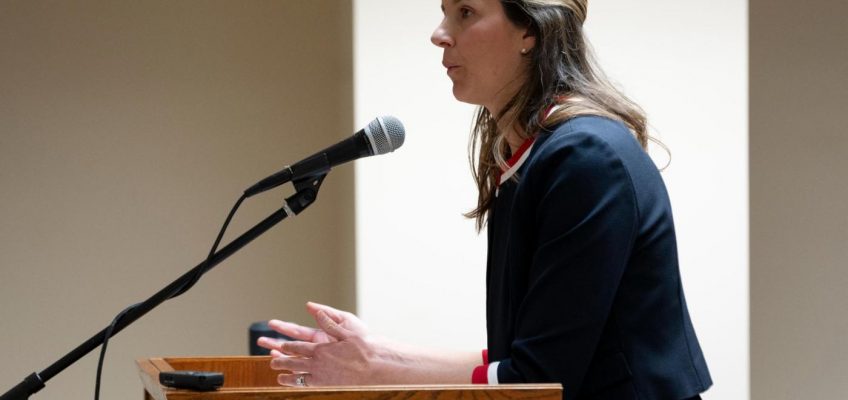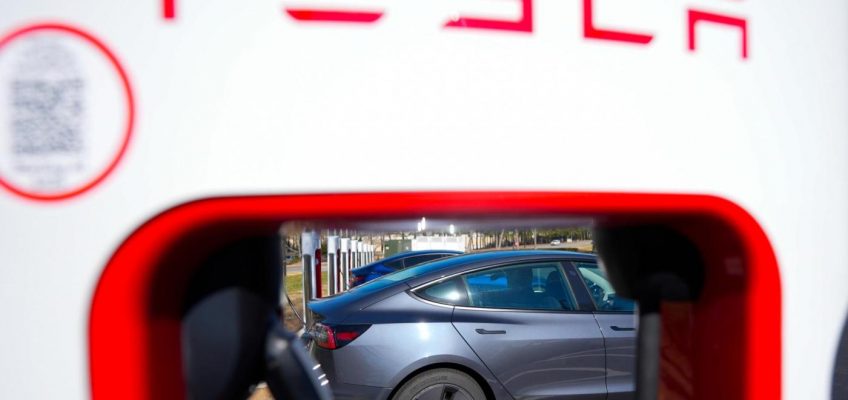By MARY CLARE JALONICK, Associated Press
WASHINGTON (AP) — The Senate has confirmed President Donald Trump’s first judicial pick of his second term, voting to approve Whitney Hermandorfer as a judge for the Sixth U.S. Circuit Court of Appeals.
The confirmation of Hermandorfer, who worked for Tennessee’s attorney general, comes after the Democratic-led Senate under former President Joe Biden confirmed 235 federal judges and the Republican-led Senate in Trump’s first term confirmed 234 federal judges.
The two presidents each worked to reshape the judiciary, with Trump taking advantage of a high number of judicial vacancies at the end of President Barack Obama’s term and Democrats working to beat Trump’s number after he had the opportunity to nominate three Supreme Court justices.
So far in his second term, Trump has fewer vacancies to fill. While he inherited more than 100 vacancies from Obama, who was stymied by a Republican Senate in his final two years, Trump now has 49 vacancies to fill out of almost 900 federal judgeships.
Senate Majority Leader John Thune said last week that the Senate would work to quickly confirm Trump’s judicial nominees, even though “we’re not facing the number of judicial vacancies this Congress we did during Trump’s first term.”
Sen. Majority Leader John Thune, R-S.D., center, talks after a policy luncheon on Wednesday, July 9, 2025, at the Capitol in Washington. (AP Photo/Mariam Zuhaib)
Hermandorfer, who was confirmed 46-42 along party lines, has defended many of Trump’s policies as director of strategic litigation for Tennessee’s attorney general, including his bid to end birthright citizenship. Democrats and liberal judicial advocacy groups criticized her as extreme on that issue and others, also citing her office’s defense of the state’s strict abortion ban.
Before working for the Tennessee Attorney General, she clerked for three Supreme Court justices. But at her confirmation hearing last month, Democratic Sen. Chris Coons of Delaware criticized what he called a “striking brevity” of court experience since Hermandorfer graduated from law school a decade ago.
Related Articles
A chaotic raid, 360 arrests, and a tragic death: What happened at California’s Glass House Farms
US imposes a 17% duty on fresh Mexican tomatoes in hopes of boosting domestic production
Trump administration says it won’t publish major climate change report on NASA website as promised
How Trump plans to dismantle the Education Department after Supreme Court ruling
MAGA faithful are angry about the Epstein case. Here’s what to know.
Illinois Sen. Dick Durbin, the top Democrat on the Senate Judiciary Committee, said Monday that Trump is only focused on “a nominee’s perceived loyalty to him and his agenda — and a willingness to rule in favor of him and his administration.”
The Judiciary panel is scheduled to vote on additional judges this week, including top Justice Department official Emil Bove, a former lawyer for Trump who is nominated for the 3rd U.S. Circuit Court of Appeals. Bove’s nomination has come under scrutiny after a fired department lawyer claimed in a complaint that Bove used an expletive when he said during a meeting that the Trump administration might need to ignore judicial commands. Bove has pushed back against suggestions from Democrats that the whistleblower’s claims make him unfit for the federal bench.
Bove has also accused FBI officials of “insubordination” for refusing to hand over the names of agents who investigated the U.S. Capitol riot and ordered the firings of a group of prosecutors involved in the Jan. 6 criminal cases.




